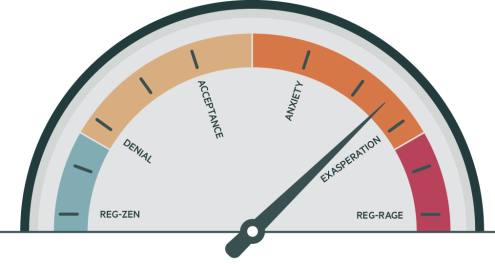The UK’s government-backed Fair4All Finance service has launched a data insight tool to support financial institutions as they comply with the Financial Conduct Authority’s new Consumer Duty to deliver good outcomes for retail customers.
According to Fair4All Finance, at least 17.5 million UK adults are in financially vulnerable circumstances and could benefit from tailored financial products and services to help them build their financial resilience.
The open-access tools are being made available free of charge, either directly or via third-party services, such as analyst CACI’s database. The data insights are organised around financial behaviours, rather than traditional demographics. Founded in 2019, Fair4All Finance is focused on UK financial inclusion.
“There have been a lot of assumptions that have been built up around the word ‘vulnerability’,” says Sacha Romanovitch, CEO, Fair4All Finance. As an unintended consequence of those assumptions, much legislation has been built around treating vulnerability as a risk rather than understanding there are “certain times in people’s lives where they haven’t got the predictability that financial services is designed for”, she adds.
The underserved
Among those estimated 17.5 million UK adults underserved by the traditional finance sector, Fair4All Finance identified six customer segments. Those comprise:
- ‘Unsteady starters’, who are younger people with flexible incomes establishing their home, work and financial lives. They often use shorter-term credit in smaller amounts. This group number is around 1.3 million.
- ‘Squeezed and sliding’ are people with less certainty around their finances and are becoming squeezed. Most are just about managing their debts, but some are using savings or borrowing more to make ends meet. There are an estimated 3.9 million in this group.
- ‘Credit crisis families’ are families who are in a cycle of juggling and struggling with everyday bills and debts, finding as much credit as they can in all forms. Around 3.5 million people are in this sector.
- ‘Difficult debts’ have reasonable incomes and tend to rent their homes. They are burdened with repayments on higher, longer-term debt levels from multiple sources. This group is around 2.2 million people.
- ‘Forgotten families’ are people with very low income and low savings. Many are living in poverty. They have lower levels of debt potentially explained by fewer options to access credit, or attitudes to credit. Around 3.6 million people are in this sector.
- ‘(Un)Golden years’ are older people with health issues. They have better financial circumstances than other groups but having limited ability to earn means they are worried about the future. An estimated 3.1 million sit in this group.
By understanding these sectors based on financial behaviour, banks can map the findings with additional data sets and get better insights on how to tailor and deliver different products and services to meet customer needs, says Ms Romanovitch.
Range of initiatives
Alongside these insights and tools, Fair4All Finance has developed a range of initiatives targeted to the specific needs of different customer groups. Those include an income maximisation tools that can be integrated into customer journeys, covering benefit calculators and grant finders; affordable consolidation loans to enable people to take control of their existing debt commitments in a manageable way; and referral partnerships with community finance providers such as credit unions and community development finance institutions to direct people towards specialised support.
“There hasn’t been the level of data and insight to understand the reality of people’s lives,” says Ms Romanovitch. “What you’ve got is a lot of financial products and it’s either that [financial services companies] aren’t serving this customer group, or when they are, they’re giving them products and services that almost set them up to fail, rather than set them up to succeed.”
Ms Romanovitch points to a specific case study that shows the benefits of viewing vulnerability as an opportunity rather than a risk. Via the tools and organisations that work with Fair4All finance, a mother of an autistic child who suffers with incontinence issues was able to access loans that purchased a clothes dryer and a second bed for their home. Because the mother now had labour-saving access to clean and dry clothes for her child, as well as access to better sleep due to a separate bed, she was able to return to work. “She’s flipped from somebody who was stuck, into somebody who is actually now on her pathway to become a really great customer of any financial institution,” Ms Romanovitch says.
According to Fair4All Finance, of the 17.5 million UK adults in financially vulnerable circumstances, 29% have no savings and an additional 30% have less than £1000. Some 36% have struggled to make repayments on personal loans and 34% often find they need to borrow money ahead of events like birthdays and Christmas.
However, given the current cost of living crisis in the UK, even people with relatively high incomes, who may not have been considered previously as financially vulnerable, are now at risk of financial exclusion with poor credit history or thin credit files and unpredictable income combined with rising living costs potentially preventing access to mainstream finance, according to Fair4All Finance.
“The real hope with this is that with this information, it gives banks much deeper insight into the different types of financial behaviour. Let’s then look at their existing customers to see how they might better tailor products and services, but it also offers the opportunity to say, look, there are 17.5 million people who aren’t quite getting what they need from financial services,” says Ms Romanovitch. “From my perspective, as a businessperson, that’s a really big opportunity.”







